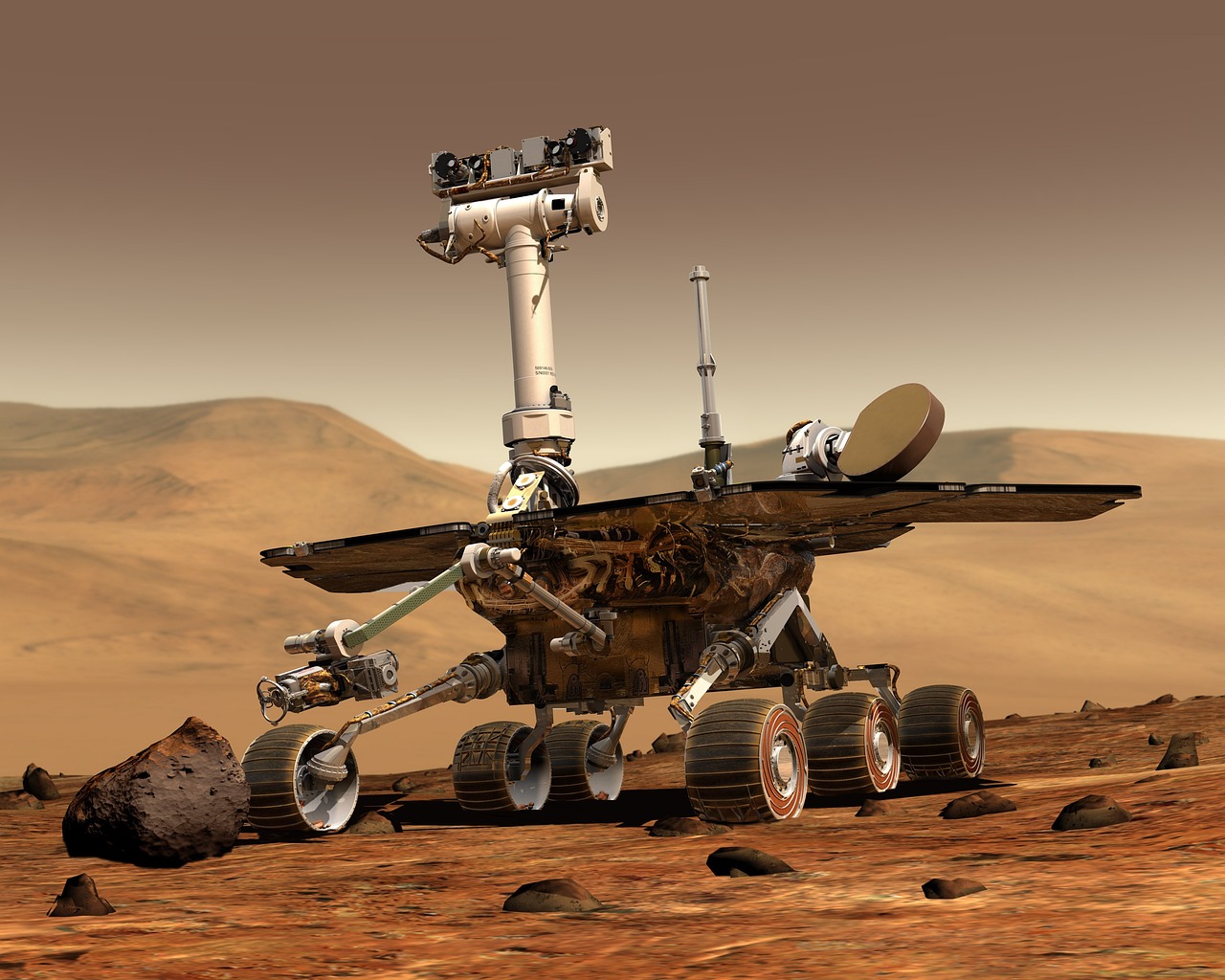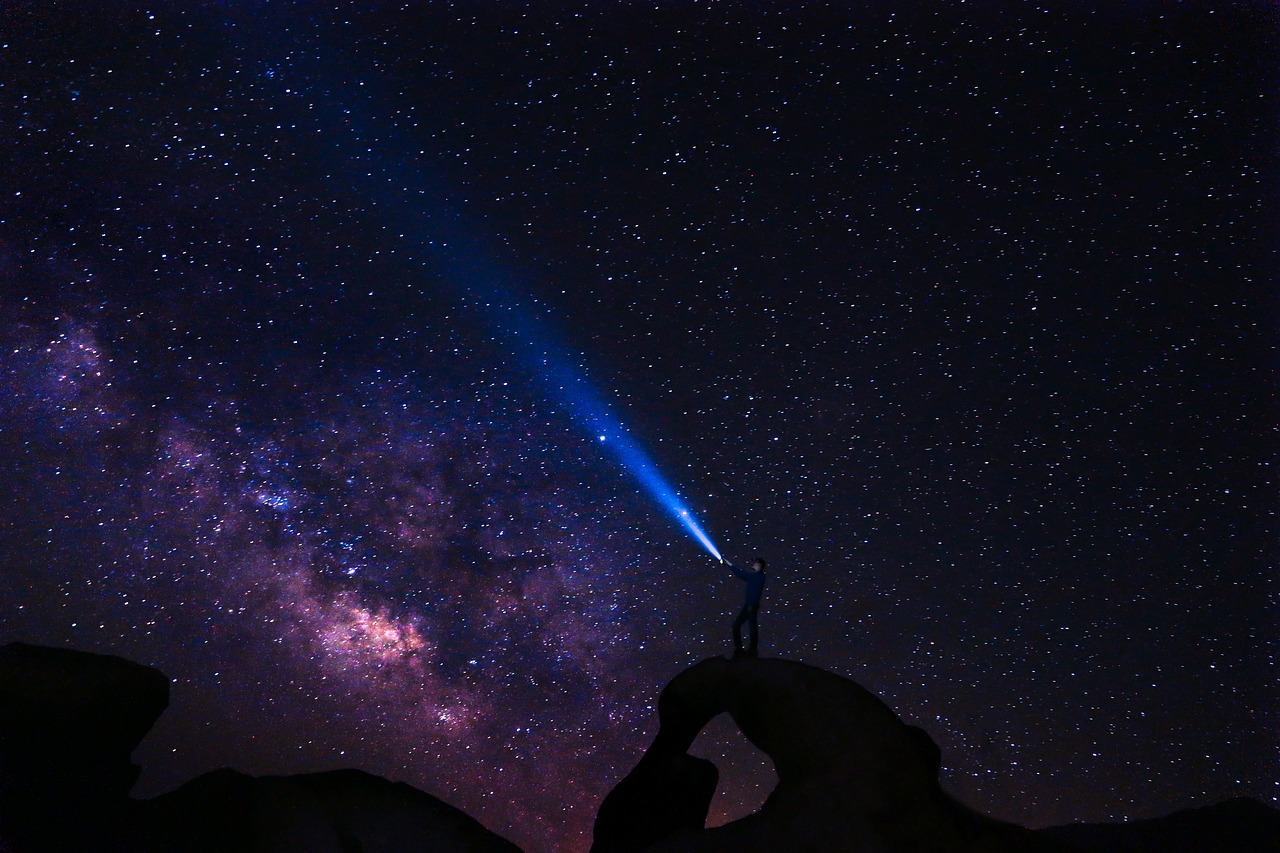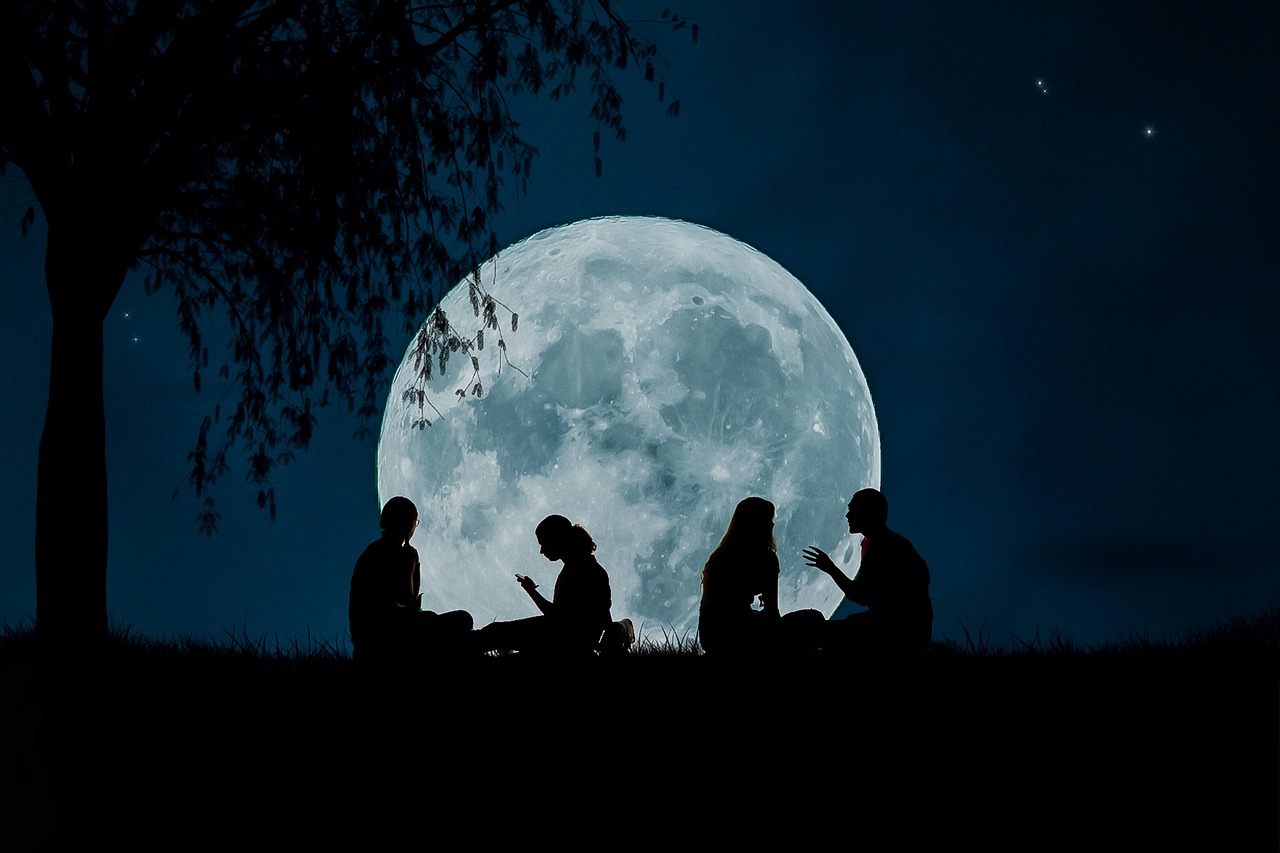Journey Through Time: Exploring the Artistic Wonders of 1960s Sci-Fi

Step into a vibrant world where imagination knows no bounds! The 1960s was a decade that not only shaped modern society but also redefined the realm of science fiction art. Let’s embark on a journey through time, exploring the artistic wonders of this era that captivated the hearts and minds of many.
The Cultural Landscape of the 1960s
The 1960s was a time of change, marked by significant social and technological advancements. Artists drew inspiration from:
- The Space Race: The competition between the USA and the USSR fueled a fascination with space exploration.
- The Counterculture Movement: A rebellion against traditional values led to a surge in creative expression.
- Technological Innovations: The rise of computers and other technologies opened new avenues for artistic expression.
Iconic Artists and Their Works
Let’s take a closer look at some of the iconic artists whose works defined the sci-fi art scene of the 1960s:
| Artist | Notable Works | Contribution |
|---|---|---|
| Frank Frazetta | Death Dealer, Conan the Barbarian | Revolutionized fantasy and sci-fi illustrations with dynamic compositions. |
| Chris Foss | Space 1999, Star Wars | Known for detailed spacecraft designs and vibrant colors. |
| H.R. Giger | Alien (later decades) | Introduced surrealism and biomechanical aesthetics to sci-fi art. |
Themes in 1960s Sci-Fi Art
Throughout this vibrant decade, various themes emerged in sci-fi art:
- Space Exploration: Capturing the excitement of interstellar travel and the unknown.
- Alien Life: Imagining extraterrestrial beings and their civilizations.
- Futuristic Technology: Envisioning advanced gadgets, robots, and transportation systems.
Interactive Experience: Discovering Sci-Fi Art
Imagine walking through a gallery filled with the stunning works of 1960s sci-fi art. Let’s create an interactive experience:
- Visualize: Picture yourself standing before a vibrant painting of a spaceship soaring through the stars.
- Engage: What feelings arise? Excitement, curiosity, perhaps nostalgia for the future?
- Reflect: How did these artworks influence your view of technology and space exploration?
The artistic wonders of 1960s sci-fi art continue to captivate audiences today. As we reflect on this exciting time, we recognize the profound impact these artists and their visions had on our collective imagination. Let us celebrate the legacy of 1960s sci-fi art and its ability to inspire generations to dream of tomorrow!
Beyond the Stars: The Impact of 1960s Sci-Fi Art on Modern Imagination

Imagine a world where the boundaries of reality blur with the fantastic, where the cosmos beckons with its mysteries. In the 1960s, a renaissance of creativity flourished in the realm of science fiction art, captivating minds and shaping dreams. This era produced iconic visuals that not only entertained but ignited imaginations. Let us journey through this transformative decade and explore its lasting impact on our modern perspectives.
The Golden Age of Sci-Fi Art
During the 1960s, a wave of innovative artists emerged, each contributing to the rich tapestry of science fiction. They combined traditional techniques with imaginative concepts, creating a new genre that resonated with audiences. Famed artists such as Frank Frazetta and Chris Foss brought to life otherworldly landscapes and futuristic technologies, stimulating the minds of young dreamers.
Iconic Imagery that Transcended Time
One of the most significant aspects of 1960s sci-fi art was its ability to transcend time and inspire future generations. The vivid colors, dynamic compositions, and surreal themes of this artwork have left an indelible mark on popular culture.
| Artist | Key Work | Impact |
|---|---|---|
| Frank Frazetta | The Death Dealer | Revolutionized fantasy art, inspiring countless modern artists. |
| Chris Foss | Spacecraft | Defined the aesthetic of futuristic vehicles in literature and film. |
| Robert McCall | NASA Mural | Influenced public perception of space exploration and science. |
Influence on Modern Imagination
The art produced in the 1960s has greatly influenced contemporary media, from films to video games. The visual language of this era introduced concepts that are commonplace today, such as:
Space Exploration: Artists envisioned interstellar travel, inspiring real-life missions to Mars and beyond.
Alien Life: The portrayal of extraterrestrial beings broadened our understanding of life beyond Earth.
Technological Advancements: Concepts like artificial intelligence and advanced robotics were vividly illustrated, paving the way for modern innovations.
Interactive Imagination
Engaging with sci-fi art from the 1960s invites us to participate in a dialogue between the past and the future. Consider the following:
Reflect: What images from your youth still resonate with you today? How did they shape your views on technology and exploration?
Create: Try your hand at drawing or painting your vision of the future. What elements from the 1960s inspire you?
Share: Discuss with friends or family the impact of sci-fi art on your lives. What stories do you have related to these visions?
The sci-fi art of the 1960s was more than just a visual feast; it was a catalyst for imagination that continues to inspire. As we look beyond the stars, we recognize that the visions crafted by artists of that era have paved the way for our understanding of the universe and our place within it. Let us carry forward this legacy, embracing the creativity that fuels our dreams.
Color and Chaos: The Vivid Palette of a Decade Defined by Dreams

Embracing the Kaleidoscope of Imagination
The 1960s were a vibrant canvas painted with dreams, innovation, and chaos. Sci-fi art from this era was not just an artistic expression; it was a reflection of societal aspirations and fears. Imagine stepping into a world where colors clash and harmonize, where the impossible becomes possible.
Colors that Speak
What colors come to mind when you think of the 1960s? Bright oranges, deep blues, and electric greens dominated the scene. These colors were not random; they were carefully chosen to evoke emotions and provoke thought. Take a moment to reflect:
- Orange: Symbolizing energy and enthusiasm, it captured the spirit of a generation ready to break free.
- Blue: Evoking calmness and depth, it hinted at the vast unknown of space.
- Green: A reminder of nature and the environmental movements that began to emerge.
The Chaos of Creativity
The art of the 1960s was characterized by its chaotic beauty. Artists experimented with forms, textures, and mediums, often blending traditional techniques with modern influences.
- Collage: Many artists used collage to juxtapose images, creating a dialogue between different eras and ideas.
- Abstract Forms: Shapes became less defined; fluidity and movement took center stage.
- Pop Art: This movement exploded onto the scene, merging commercial imagery with fine art, challenging the boundaries of creativity.
Interactive Reflections
Take a moment to think about your own experiences with color and art. How did the vibrant palette of the 1960s influence your perceptions? Did you feel a connection to the themes of space exploration, social change, or personal freedom? Engage with these memories as you explore the art of this transformative decade.
Legacy of the Vivid
As we delve deeper into the world of 1960s sci-fi art, we recognize that its legacy continues to inspire contemporary artists. The vivid palette and chaotic forms invite new generations to dream and create.
Let your imagination run wild. What does the future hold for art and color? Perhaps it will be a blend of the past with the dreams of tomorrow.
The Art of Possibility: How 1960s Sci-Fi Visions Shaped Our Future
The Art of Possibility
The 1960s was a decade of unprecedented creativity and imagination, particularly in the realm of science fiction art. This era not only reflected the dreams of a generation but also influenced the trajectory of our technological advancements and cultural perceptions of the future. Let’s explore how these artistic visions shaped our reality.
Imagining the Future
In the 1960s, artists like Chris Foss, Frank Frazetta, and Robert McCall redefined what the future could look like. Their vibrant illustrations depicted futuristic cities, flying cars, and alien landscapes that captivated the imagination of many. How often did you find yourself lost in these fantastic worlds?
A Glimpse into Technology
Many of the technologies imagined during this time have become a reality. For instance, the concept of video calling, often seen in sci-fi films, is now a part of our everyday lives through platforms like Zoom and Skype. Reflect on this: What futuristic technology from the 60s do you think had the most profound impact on your daily life?
Cultural Reflections
The art of this era also served to reflect the cultural anxieties and hopes of the time. The space race, civil rights movements, and the Vietnam War influenced these artists to create works that often questioned humanity’s place in the universe. Consider how these factors shaped your understanding of the world back then.
Engaging with the Past
Looking back at the sci-fi art of the 1960s, we can engage with it in meaningful ways. Perhaps you have a favorite piece or artist from that time. What emotions or memories does it evoke for you? Sharing these stories can help connect generations and celebrate the rich history of sci-fi art.
Legacy and Inspiration
Today’s artists and creators still draw inspiration from the visions of the past. Many modern films and shows pay homage to the distinct styles and themes of 1960s sci-fi art. As we continue to push the boundaries of possibility, remember the role that these early visions played in shaping our dreams. What future do you envision for the next generation?
Imagining the Unimaginable: The Powerful Themes of 1960s Sci-Fi Art
Exploring the Boundaries of Imagination
The 1960s marked a pivotal era in the realm of science fiction art, where artists began to push the boundaries of imagination and creativity. This decade was characterized by a bold exploration of themes that resonated deeply with the societal anxieties and aspirations of the time. As you delve into the world of 1960s sci-fi art, consider the following powerful themes:
1. The Future of Humanity
Human Evolution: Artists portrayed visions of human evolution, often depicting hybrid beings or advanced civilizations. These images compelled viewers to ponder the direction humanity was heading.
Interactive Reflection: What do you think the future holds for humanity? How do you envision our evolution?
2. Space Exploration
The Final Frontier: The race to space inspired a plethora of artworks featuring astronauts, spacecraft, and alien worlds. Artists like Chris Foss and Frank Frazetta captured the excitement and mystery of space travel.
Interactive Reflection: Recall a moment when you first learned about space travel. How did that influence your view of the universe?
3. Dystopian Futures
Societal Concerns: Many artworks depicted dystopian themes, reflecting fears of totalitarianism, nuclear war, and ecological disaster. Artists used striking imagery to convey their warnings.
Interactive Reflection: Have you ever experienced a moment that made you feel concerned about the future? How did that shape your outlook?
4. Technology and Its Impact
Man vs. Machine: The rise of technology was a double-edged sword, inspiring both awe and fear. Artworks often explored the relationship between humans and machines, questioning the implications of technological advancement.
Interactive Reflection: How do you feel about technology today? Do you see it as a friend or a foe?
5. Alien Encounters
The Unknown: Encounters with extraterrestrial beings were a popular subject, symbolizing humanity’s curiosity and fear of the unknown. Artists created imaginative representations of aliens that sparked fascination.
Interactive Reflection: If you could meet an alien, what would you want to ask them? What do you believe they would teach us?
Conclusion: The Legacy of 1960s Sci-Fi Art
The art of the 1960s continues to resonate today, inviting us to reflect on our own fears, hopes, and dreams. As you engage with these themes, remember that art is not just a reflection of reality but an invitation to imagine new possibilities. Through the lens of 1960s sci-fi art, we can engage with the profound questions that shape our existence.
